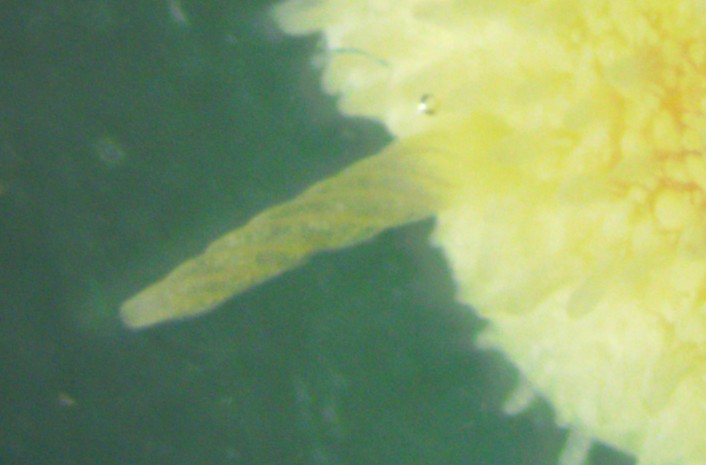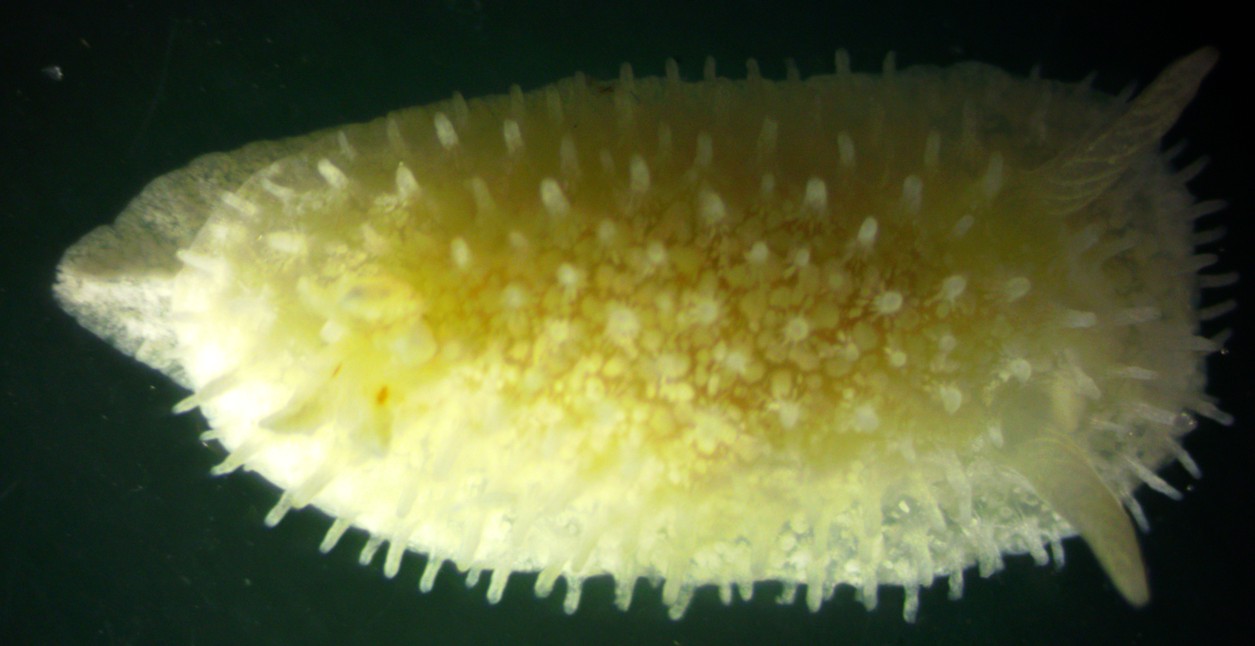Diaphorodoris liratocauda Millen, 1985Common name(s): Porcupine dorid |
|
| Synonyms: Onchidoris hystricina |  |
|
Class Gastropoda
Family Onchidorididae
|
|
| Diaphorodoris liratocauda, 11 mm long, found subtidally at Sares Head. The rhinophores, dorsal papillae, and gills are all visible in this view. | |
| (Photo by: Dave Cowles, August 2014 ) | |
Description: This Dorid nudibranch has the anus on the midline of the dorsum, surrounded by a single circle of gills which are enclosed by a common sheath but cannot be completely retracted into it. The dorsum has long, tapered papillae making it look spiky or fuzzy, but no conspicuous outgrowths such as cerata, and no yellow line around the margin. The rhinophores are long, slender, taper from the base to the tip, and are colored white or yellowish-white (photo). The pointed tail has a mid-dorsal ridge (photo). Color white or cream with small white flecks between the papillae. Length to 12 mm.
How to Distinguish from Similar Species: Several other small whitish dorids have gills which extend from separate pits, not surrounded by a common sheath. They also have no mid-dorsal ridge on their tail.
Geographical Range: Southern Alaska to Baja California, Mexico
Depth Range: Intertidal and subtidal
Habitat:
Biology/Natural History:
This species
feeds on bryozoans such as Nolella
stipitata and Tubulipora
sp.
| Return to: | |||
| Main Page | Alphabetic Index | Systematic Index | Glossary |
References:
Dichotomous Keys:Carlton, 2007
Kozloff, 1987, 1996
General References:
Behrens,
1991
Behrens
and Hermosillo, 2005
Lamb
and Hanby, 2005
Scientific Articles:
Web sites:
General Notes and Observations: Locations, abundances, unusual behaviors:
I have not often seen this small nudibranch near Rosario.

A closeup of the rhinophore
shows that it is long and slender, tapers gradually from base to tip,
and
has a spiral ridge

This dorsal
view shows the ridged tail on the left.
Authors and Editors of
Page:
Dave Cowles (2014): Created original page
CSS coding for page developed by Jonathan Cowles (2007)
Salish Sea Invertebrates web site provided courtesy of Walla
Walla University